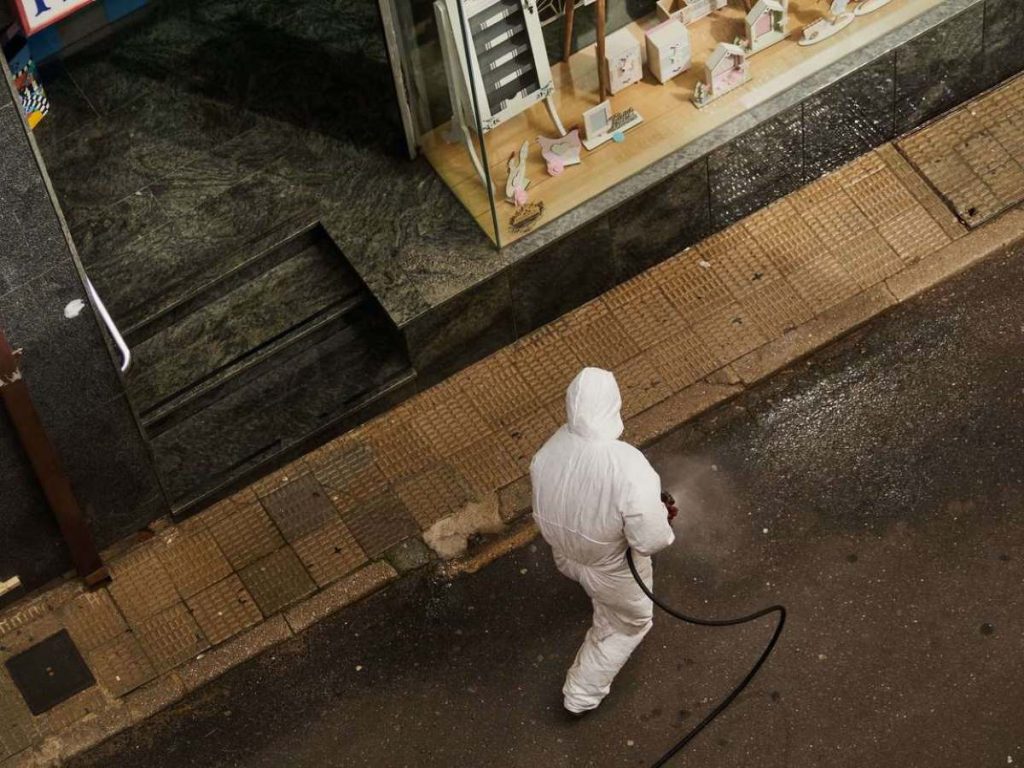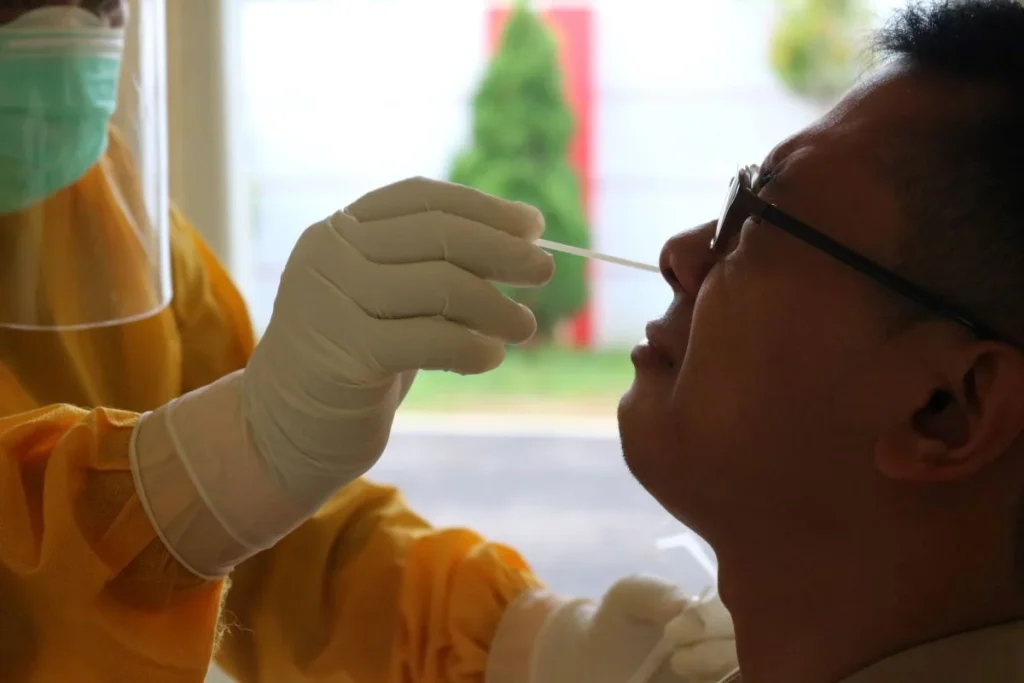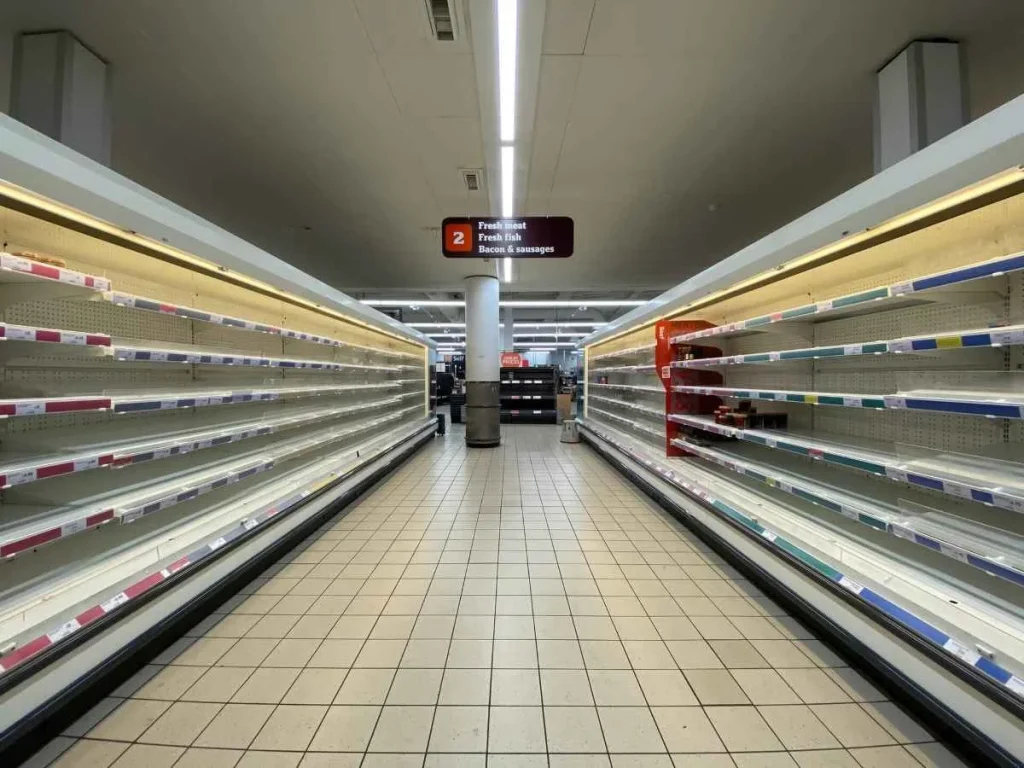After nearly two years of living in fear and wave after wave of what could be the deadliest virus outbreak in the history of the world, hopefully, individuals are ready to embrace the belief that the latest COVID-19 virus variant marks the beginning of the end of the pandemic.
In one tweet, for example, Microsoft founder Bill Gates tweeted this week that once omicron subsides, “the rest of the year should see far fewer cases so Covid can be treated more like seasonal flu.”
The question remains: does the Omicron variant really mark the end of the pandemic? For all we know, the Omicron variant only pushed the end of the pandemic further.
What is The Omicron Variant?
The Omicron Variant of COVID-19 is a new strain that has continuously infected millions of people around the globe. Marked as a variant of concern, the WHO has found evidence that this new strain has several mutations that have impacted how the variant behaves. As the virus circulates widely and causes numerous infections, the likelihood of the virus mutating increases. This line of thought is only logical as the more infected there are, the more opportunities there are to undergo a change that alters the base code and genome build of the virus.
While many people may believe that the less severe nature of the new variant may signify the end of the pandemic, it’s an unspoken truth that new variants like Omicron serve as a reminder that the COVID-19 pandemic is far from over.
While scientists around the globe continue to research and learn more about this new variant, it’s the best advice of organizations and governments that the general public continues to protect themselves through physical distancing, wearing masks, and keeping indoor areas properly ventilated.

What is a Pandemic?
To know when a pandemic will end, we’ll need to identify the parameters of which a pandemic exists. Pandemic flu has been one of the buzzwords since late 2005 and to this day, so many people do not know exactly what it is. Merriam-Webster has reported that pandemic is the seventh most frequently looked-up word in its online dictionary this year.
There are two parts to the pandemic definition that we care about. First, the virus in question has to be a new strain that has never infected people before. Secondly, the pandemic should be on a global scale.
Notice here that the definition makes no mention of the deadliness of the virus and while that may not be a non-factor in our definition, it is, in fact, usually the case with these viruses. COVID-19, if you remember, killed millions of people around the globe.
A pandemic is basically a global epidemic – an epidemic that spreads to more than one continent. Influenza pandemics have struck about three times every century since the 1500s, one occurs roughly every 10-50 years.
That said, the WHO has actually developed a system of identifying where the world stands with regard to pandemic flu. The system has six phases:
● Phase 1 – No new influenza virus has been found in people or animals.
● Phase 2 – New virus has appealed in animals, but no human cases.
● Phase 3 – A new strain of animal influenza virus infects humans, but there have not been human-to-human infections.
● Phase 4 – The new virus passes from person to person, but transmission is limited and confined to a certain location.
● Phase 5 – There is frequent transmission of the virus between people in a particular place but it hasn’t spread to the rest of the world.
● Phase 6 – Pandemic. The virus is widespread worldwide.
While as of right now the COVID-19 is on phase 6, governments and organizations are currently looking for different ways to stop the spread and reduce the alert levels.
How Do You Stop a Pandemic?
In situations like this, where we live in the midst of a public health emergency and continuously struggle to find the best course of action to stop the nature of the virus, there are three things that governments and everyday people can do to stop these kinds of outbreaks.
Non-Pharmaceutical Interventions
Non-pharmaceutical interventions were, for the most part, the majority of the measures we took during the early part of the pandemic. These kinds of interventions include anything from early detection and travel restrictions to isolation, social distancing, and reducing human-to-human contact.
During the initial phases of the pandemic, it was found that if China didn’t enforce similar measures like the one stated above, mainland China could have seen a 67-fold increase in the number of people infected.
While this implies that the plan did work, further studies show that these measures would have had a greater impact if the same practices were applied earlier.
Lockdowns
When looked at individually it is less clear which non-pharmaceutical interventions are most appropriate as this can depend upon the particular circumstances. One set of rules could include restricting travel, which has a history of working in the centuries of influenza and pandemic flu going around.
This practice works particularly well for island communities. During the 1918 Spanish flu pandemic, for example, American Samoa had completely escaped the disease through a mix of strict quarantine for travelers and travel bans while then-Western Samoa failed to impose similar measures and suffered many deaths from influenza. The island even went so far as to restrict the travel of animals to the UK to help the island remain rabies-free for over a century since the virus does not circulate among domestic or wild animals.
Targeting High-Risk Individuals
Another quite popular strategy especially among less fortunate companies is to target high-risk individuals approach. As more people become infected, this increased focus on trying to reduce the burden on health systems becomes increasingly important and can lead to strategies aimed at prioritizing resources. They work best for lesser fortunate countries because like the strategy says, it addresses the need for prioritizing resources, which is another way of saying that resources are limited and should thus be properly allocated.

In Switzerland, for example, authorities have decided to stop testing people with only mild symptoms and are not at risk, they choose instead to find younger people without underlying serious health conditions.
While this could be viewed as a risky strategy by some, it is without question a much more efficient means to preserve resources for severe cases. Unfortunately, this also makes it more difficult for people to know if they have come into contact with the virus and are potentially vulnerable. For low-income countries with limited resources and poor public health infrastructure, while this may not inherently stop the spread of the disease, it could save more lives in the long run.
Crown Asia, the leading home developer in the Philippines for the past 25 years, takes these principles to heart and finds ways to ensure the safety of the community both physically and health-wise through property management, community monitoring, as well as strictly adhering to government principles and roles.
There’s so much that any of us could do that others take for granted. It’s necessary now, more than ever, that we think about the community and cast away selfish thoughts that don’t promote a healthy and productive society.

Is The Omicron a Sign Of The Beginning Of The End?
Here’s what we know: Omicron causes less severe illnesses, results in fewer hospitalization, fewer patients on ventilators, and it simply comes and goes faster than the deadly delta variant.
While Omicron transmission rates continue to reach unprecedented and nearly incomprehensible rates, the numbers seem to be telling a different story than with previous surges as many of these positive cases include what can only be described as incidental COVID-19 patients – these are the people who test positive for the virus when they enter the hospital for other reasons.
Despite the optimism, however, infectious disease and public health experts all say that it’s going to get a lot worse before it gets better. It’s too early to say whether or not Omicron will represent the last run of COVID-19.
It’s hard to say whether the highly transmissible Omicron variant will usher in the end of COVID-19, especially with what we pointed out earlier that the more infected there are, the higher chances there are of mutation.
Some medical experts have actually speculated that this is a good step towards shifting our world status from “pandemic” to “endemic”, meaning that the circulating virus no longer has the steep waves of outbreaks that hammer hospital capacity and force society to adapt.
Instead of a pandemic, an endemic virus could continue to circulate through our population – though in a way that we could handle, like the flu.
To stop the spread, some difficult trade-offs will have to be made. Experience with COVID-19 and past pandemics have shown that non-pharmaceutical interventions are perhaps the most effective way to stop the growth of the pandemic if they are part of a multifaceted approach. Admittedly, the application of such interventions involves important trade-offs that need to be considered in decisions about their extent and duration.
Say, for example, a lockdown. A lockdown is perhaps one of the best ways to stop the spread of disease if applied rigorously, consistently, and at the right time. However, a lockdown will also shut down the economy, reducing the purchasing power of involved individuals as well as disrupting the potential sales that may occur.
What Happens If We Don’t Stop the Pandemic Soon?
Well, there are two things that we’d like to talk about here: supply chain woes and inflation.
Apart from the scaled economic implications, supply chain disruptions will negatively impact our day-to-day – doctors will fail to obtain needed medicines, office workers will have difficulty in receiving their work laptops, and flights will be delayed due to crews waiting for food deliveries.
It’s a problem with no obvious solution in the near term future.

Adding to The Problem: China’s Lockdown
With the implementation of strict Chinese lockdowns, millions of people have been confined to their homes and directly caused the suspension of connecting flights through Hong Kong from much of the world for the next month.
While China’s use of lockdowns, contact tracing, and standstill quarantines grounded the spread of the coronavirus two years ago after its initial emergence, the additional disruptions to the global supply chain would come at a particularly fraught moment for companies, which are struggling with rising prices for raw materials as well as shipping amidst the extended delivery times and worker shortages.
As extensive lockdowns become more widespread in China, analysts warn that industries could face disruptions in the flow of goods and these effects could be felt on a global scale. Any major disruptions could quickly depress consumer confidence and exacerbate inflation, which, according to recent statistics, is already at a 40-year high.
Short-Term Solutions: The Resurgence of American Manufacturers
Perhaps an obviously positive result of the lockdown situation would be the resurgence of American manufacturers as companies from America look to regain some of the manufacturing output it had ceded in recent decades to China and its other constituents.
The decades of dependence on Asian factories, especially in China, have obviously been upended by delays and surging freight rates due to supply chain complications over the past year. Add the challenge of obtaining components to the already existing problem of product delivery and you’ll find many persuaded companies who’ve looked to think about locating production capacity closer to buyers.
What Does This Mean for the Economy?
These moves could majorly impact the rate at which inflation grows in the United States. As grocery supplies dwindle, prices will naturally rise and the companies that successfully meet demand will potentially reap the most rewards, these will include General Motors, Micron, and other industries with complex and more expensive products that lead to the resurgence of the American manufacturing industry.
It would be interesting to monitor the proceedings of manufacturing companies post-lockdown to see if the continuous operation will help alleviate supply chain issues.
Related Blog: What You Need to Know About the Omicron Variant


